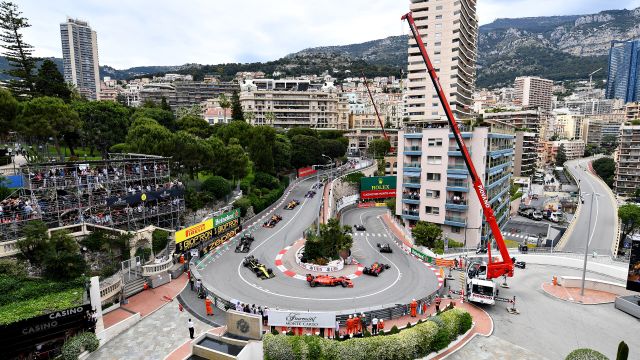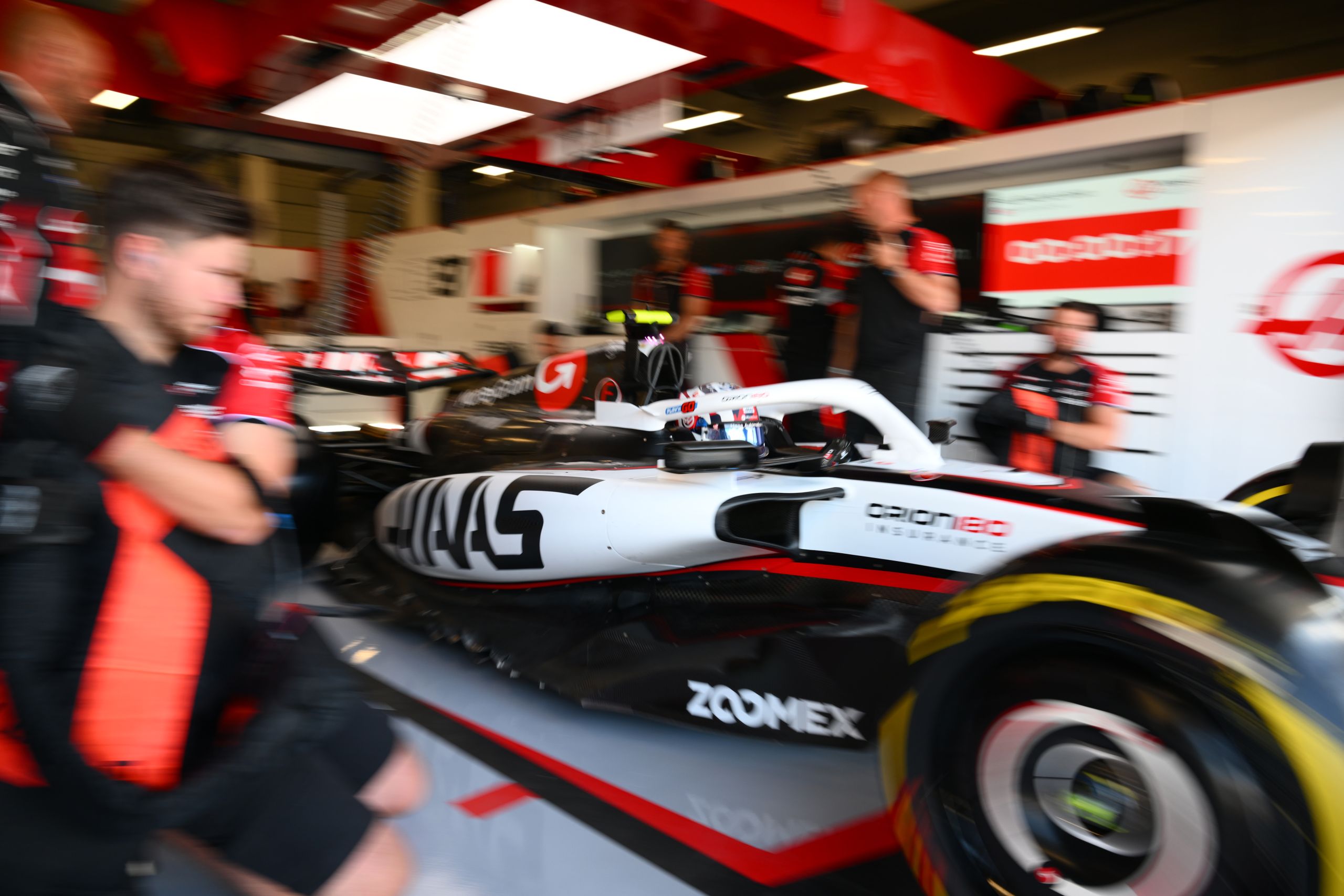What Does Hairpin Mean In F1?


The term ‘hairpin curve’ often piques curiosity; so, what exactly does a ‘hairpin’ mean in F1, and why is it of paramount significance to the sport?
The term “hairpin” in F1 refers to a specific kind of corner that features a very tight, 180-degree turn and requires full steering lock from the driver to navigate successfully.
The hairpin bend is strategically significant in Formula 1 races as it presents one of the best opportunities for drivers to overtake their competitors. Due to their slow nature, hairpins demand proper braking and precise timing to find the optimal racing line. These high-pressure situations often lead to captivating battles between drivers, making hairpin corners an essential aspect of racing excitement and strategy.
Key Takeaways
- Hairpin refers to a tight, 180-degree corner in Formula 1 racing
- These corners present excellent overtaking opportunities for drivers
- Mastering the hairpin requires precise braking and timing to navigate efficiently
Defining the Hairpin Bend in Motorsports
The Essence of Hairpin Bends in Racing Sports
Hairpin bends are essential features of racetracks in various motorsports. These bends are characterized by an incredibly tight curve of about 180 degrees that challenges drivers’ skills, demanding precision and solid control over their vehicles. The term “hairpin” originated from the bend’s resemblance to a hairpin or bobby pin. One of the critical aspects of hairpin turns is that they typically require drivers to significantly lower their speeds to tackle them successfully.
Notable examples of hairpin turns in different racing sports include the Fairmont Hotel in Monaco and Turn 14 at the Shanghai International Circuit in Formula One, Turns 7 and 11 at Sonoma Raceway in NASCAR, and both turns at Martinsville Speedway in NASCAR.
Decoding the Hairpin Bend in F1
In Formula One, hairpin bends play a crucial role in testing a driver’s capabilities. F1 drivers need to approach hairpins with caution, as these turns demand them to downshift their gears and maneuver their cars with immense precision. Successfully navigating hairpin turns can make a significant difference in a driver’s performance in F1 races.
Moreover, hairpin bends may present valuable overtaking opportunities, making them crucial for drivers looking to gain an advantage over their competitors. By mastering the technique to tackle hairpin bends successfully, F1 racers can experience an edge in an intense racing environment, ultimately contributing to their success on the race track.
The Strategic Advantage of Hairpins in Formula 1
The Overtaking Edge Offered by Hairpins
Hairpins are an essential part of many Formula 1 tracks, providing drivers with crucial overtaking opportunities. A hairpin is a tight corner in which drivers must turn sharply, often requiring full steering lock. Generally located at the end of long straights, hairpins require precise execution and offer various racing lines. A wide approach can lead to a better exit while a close approach might secure track position.
Some notable hairpins in F1 history include the Lowes Hairpin in Monaco, La Source at Spa in Belgium, and the one at Circuit Gilles Villeneuve in Montreal for the Canadian Grand Prix. For instance, the Lowes hairpin in Monaco is a renowned overtaking spot, where drivers maneuver their cars up the inside and past their competitors.
Hairpins offer drivers the best chances for overtaking due to their tight nature, allowing them to out-brake their rivals and muscle past. A prime example of this strategic advantage is when Max Verstappen overtook Lewis Hamilton on the final lap of the 2021 Abu Dhabi Grand Prix at Turn 5, a hairpin, to secure the world championship.
A Deep Dive into F1 Cornering Techniques
The Anatomy of Racing Corners
Corners in F1 are more than just turns on a track. They showcase the drivers’ skills and the performance of the cars. These corners come in various shapes and sizes, designed to test the drivers’ capabilities. Moreover, they vary in the level of danger and intrigue, with some corners building a reputation as fan favorites.
The defining part of a corner is its radius. The actual corner itself, excluding the straights attached to it, is a part of a circle. Larger circles with larger radii lead to faster and longer corners, whereas smaller circles result in tighter, shorter turns, like hairpins.
Drivers use the radii of corners to determine the racing line they want to take to traverse the corner as quickly as possible. There are three main parts of a corner: the entry, the apex, and the exit. These aspects must be mastered by drivers for effective cornering.
The Tri-Phase of a Racing Corner
During the entry into a corner, the driver calculates their braking point and changes gears to prepare for turning. Upon turning, the driver aims to hit the most inside part of the turn, known as the apex, before accelerating out of the corner and onto the next part of the track.
The apex is one of the most important aspects of the racing line. It is the innermost point of the corner and helps define the correct trajectory to exit the corner. There are two types of apexes: the geometric apex and the racing apex.
The geometric apex centers the turn to the absolute middle of the corner, minimizing the severity of steering and utilizing the shallowest arc of the corner. The racing apex offers a more fluid approach to corners. The turning point for a racing apex is slightly later, requiring drivers to delay their braking. This approach results in a sharper turn but allows the driver to gain more speed through the exit due to the straighter line leading out of the corner.
Fast corners in F1 are turns that require minimal to no braking, allowing the cars to navigate at incredibly high speeds. Tracks with numerous high-speed corners necessitate a suitable amount of downforce to maintain speed through the corners. Examples of fast corners in F1 include the 130R at Suzuka and Maggotts & Becketts at Silverstone.
In conclusion, cornering techniques in F1 are vital for navigating the different types of corners on a track. Understanding the anatomy of racing corners and mastering the tri-phase of a racing corner are essential for drivers to improve their performance and skill.
Iconic Hairpin Curves: A Historical Perspective
Spotlight on Notable Hairpin Turns in F1 History
Hairpin turns or hairpins are very tight corners often featured in F1 circuits that require drivers to steer sharply and apply heavy braking. They are usually amongst the slowest corners on the track and are a significant test of drivers’ technique and car handling.
One of the most iconic hairpin turns in F1 history is Monaco’s Fairmont Hotel Hairpin (often referred to as Loews). This historic corner, part of the Monte Carlo circuit since its inception in 1929, is considered one of the tightest turns across all global motorsport events. The unique challenge of navigating this hairpin contributes to the Monaco Grand Prix’s long-standing status as the most iconic event on the F1 calendar.
Another notable hairpin turn can be found at the Circuit de Spa-Francorchamps in Belgium. The La Source hairpin, situated at the beginning of the track, is characteristically tight and slow, where drivers must utilize their skills for optimal positioning and a successful exit to gain an advantage over their rivals. This corner has been an integral part of the Spa circuit since its first race in 1922.
Yet another famous hairpin can be found at the Canadian Grand Prix venue at Circuit Gilles Villeneuve. The L’Epingle hairpin, also known as Turn 10, is a slow and wide touring bend that demands precise car control and braking strategy, especially considering the high-speed straight that precedes it. This corner has been a challenging feature of the circuit since the Canadian Grand Prix’s inception in 1978.
These iconic hairpin turns, representing only a few examples from F1’s extensive history, have stood the test of time and continue to be exciting focal points of world-class racing events. Today, they serve as a reminder of the skill and determination required to excel in the fast-paced world of Formula 1 racing.
What Does Hairpin Mean In F1? – Frequently Asked Questions
What is the slowest hairpin in Formula 1?
The slowest hairpin in Formula 1 is the Fairmont Hotel Hairpin at the Monaco Grand Prix circuit. Drivers navigate this corner at just 50 kilometers per hour. This hairpin has had different names in the past, like “Station” and “Loews” Hairpin.
What is the tightest hairpin in F1?
The tightest hairpin in F1 is the Fairmont Hotel Hairpin in Monaco. It is an incredibly tight corner that requires heavy braking, precise steering, and skillful throttle control from the drivers to make it through successfully.
What is the hardest turn in F1?
While it’s difficult to pinpoint a single hardest turn in F1, as it depends on individual drivers’ opinions and preferences, some challenging ones include Eau Rouge at the Spa-Francorchamps circuit in Belgium and Turn 8 at the Istanbul Park circuit in Turkey.
What is the slowest corner in F1?
The slowest corner in F1 is the Fairmont Hotel Hairpin at the Monaco circuit. With drivers going at just 50 kilometers per hour, it presents a unique challenge compared to the other high-speed corners in Formula 1.
Are there any famous hairpin turns on F1 circuits?
Yes, there are several famous hairpin turns on F1 circuits. Some examples include the Fairmont Hairpin in Monaco, La Source at Spa in Belgium, and the hairpin at the Circuit Gilles Villeneuve in Montreal for the Canadian Grand Prix. These hairpins are often excellent overtaking opportunities for drivers during races.
How do hairpins differ from chicanes in F1?
Hairpins and chicanes are both types of corners on racing circuits, but they differ in their layout and characteristics. Hairpins are sharp, U-shaped curves that require heavy braking and low-speed maneuvers from drivers. Chicanes, on the other hand, are a sequence of two or more alternating left and right turns that are often taken at higher speeds and require precise handling for maintaining momentum and navigating them effectively.





